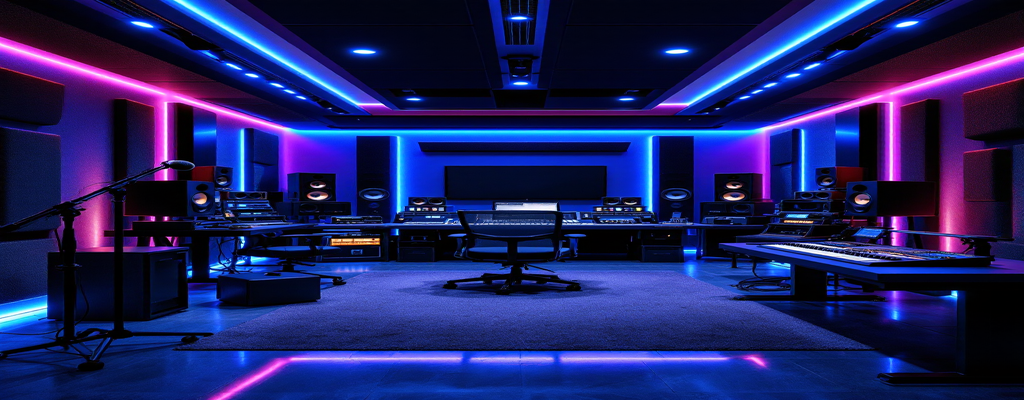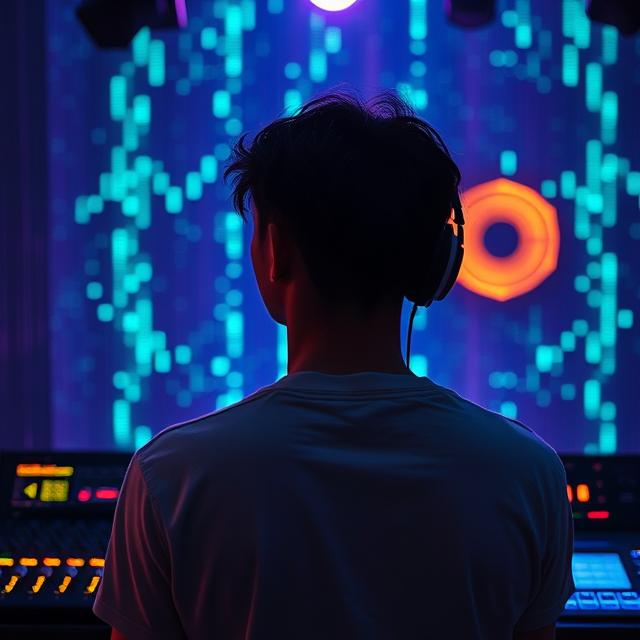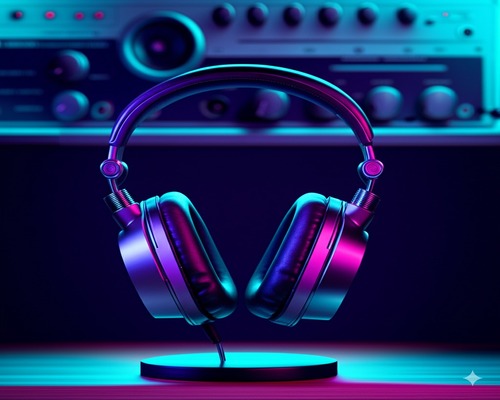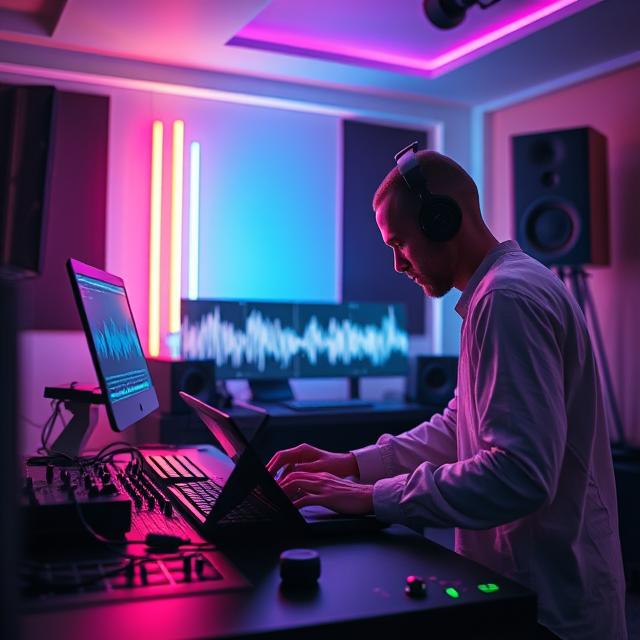
What is AI Music Prompts for Electronic Dance Music (EDM)?
AI music prompts for Electronic Dance Music (EDM) are short text-based inputs or creative cues used to guide AI music generation tools in producing EDM tracks. These prompts can describe the mood, tempo, instruments, structure, or style of the desired music. By using specific prompts, producers can quickly generate beats, melodies, or entire tracks that align with the EDM genre, streamlining the creative process and sparking new ideas.
Why EDM-Specific AI Music Prompts Matter
When you use basic prompts with AI tools, you’ll usually get basic music. That’s why you need special AI music prompts for electronic dance music that tell the AI exactly what EDM sounds like.
Electronic music has unique elements like specific drum patterns, synth sounds, and energy levels that make each subgenre different. Without clear guidance, the AI might miss important features that make house music different from techno or trance.
Good prompts help the AI understand what makes EDM special – the drops, buildups, and bass lines that dancers expect to hear. When you craft better AI music prompts for EDM, you’ll get tracks that actually sound like they belong in a club or festival.
Understanding AI Music Generation for EDM
Before diving into specific prompts, it helps to understand how electronic music AI generation works. AI music tools analyze thousands of EDM tracks to learn patterns about:
- Rhythm structures common in dance music
- Typical synth and bass sounds used in different subgenres
- Energy flow through intros, builds, drops, and breakdowns
- Production techniques like sidechaining and filter sweeps
When you write dance music AI prompts, you’re essentially guiding the AI to focus on specific elements from its training. The more precise your instructions, the better the AI can match your vision.
Modern AI EDM production systems can now create surprisingly authentic tracks across various electronic subgenres. Tools like Suno, Udio, and AIVA have specific capabilities for dance music that respond well to detailed genre prompts.
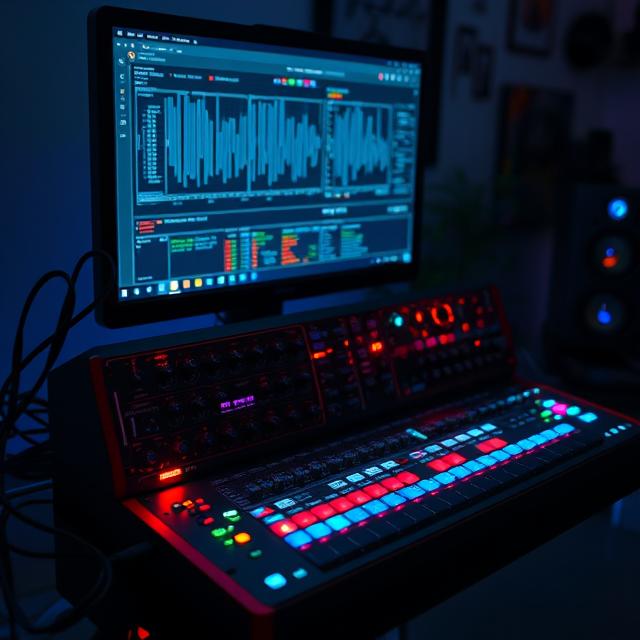
Key Elements to Include in Your EDM Prompts
To create effective AI music prompts for EDM, include these elements:
1. Tempo (BPM)
Different EDM subgenres operate in specific tempo ranges. Always specify the BPM for accuracy:
- House: 120-130 BPM
- Techno: 120-140 BPM
- Trance: 125-150 BPM
- Dubstep: 140-150 BPM
- Drum and Bass: 160-180 BPM
- Hardstyle: 150-160 BPM
Example prompt element: “at 128 BPM”
2. Beat Structure
The drum pattern defines much of an EDM track’s character:
- Four-on-the-floor kick drums (house, techno)
- Half-time beats with emphasis on beat 3 (dubstep)
- Breakbeats (drum and bass, breaks)
- Shuffled/swing rhythms (UK garage, some house)
- Hardstyle kicks with distortion
- Syncopated percussion (tech house)
Example prompt element: “with four-on-the-floor kick drum and offbeat hi-hats”
3. Bass Type
Bass is crucial in electronic dance music AI production. Specify the type:
- Deep sub-bass (deep house, techno)
- Wobble bass (dubstep)
- Acid bassline with 303-style sounds (acid house, acid techno)
- Reese bass (drum and bass)
- Pluck bass (progressive house)
- Growl bass (dubstep, hybrid trap)
Example prompt element: “featuring a rolling sub-bass that follows the kick pattern”
4. Synth Sounds
Synthesizer AI prompts should be specific about the types of synths you want:
- Supersaw leads (trance, progressive house)
- Pluck sounds (progressive house, tech house)
- Pad textures (ambient, deep house)
- Arpeggiated sequences (trance, techno)
- FM bass (dubstep, trap)
- Retro synths (synthwave)
Example prompt element: “with bright supersaw synth chords that open up during the drop”
5. Effects and Processing
Mention specific production techniques for authentic results:
- Sidechaining (especially in house music)
- Reverb/delay amounts
- Filter sweeps (buildups)
- Risers and downlifters (transitions)
- Vocal chops or samples
- Glitch effects (for experimental styles)
Example prompt element: “using heavy sidechaining on the synths and filtered sweeps in the buildup”
6. Structure Elements
EDM tracks follow specific structural patterns:
- Intro (16-32 bars)
- Breakdown (8-16 bars)
- Build-up (8-16 bars)
- Drop/chorus (16-32 bars)
- Breakdown 2
- Build-up 2
- Drop 2
- Outro
Example prompt element: “with a 16-bar intro, 8-bar breakdown, 8-bar build, and 16-bar drop structure”
To explore detailed AI music prompts tailored for specific genres, check out our comprehensive guide on AI Music Prompts by Genre.
Effective EDM Prompt Examples by Subgenre
Let’s explore detailed prompts for major EDM subgenres to showcase AI music prompts for electronic dance music:
House Music Prompts
House music is characterized by four-on-the-floor kicks, soulful elements, and groove-focused production.
- Deep House: “Create a deep house track at 124 BPM with smooth, rounded kick drums, subtle shuffled hi-hats, warm Rhodes chord stabs with gentle delay, and a rolling sub-bass that follows the kick pattern. Add filtered jazz samples and atmospheric pads in the background. Structure should include a stripped-back breakdown focusing on the chords before gradually building back to the full groove.”
- Tech House: “Generate a tech house track at 126 BPM with punchy, short kicks, crisp claps on beats 2 and 4, percussive top loops with bongo elements, and a rumbling tech bassline with slight distortion. Include quirky synth stabs and vocal snippets chopped into rhythmic patterns. Build tension using filter sweeps on the percussion and a white noise riser before dropping into the full groove.”
- Progressive House: “Make a progressive house track at 128 BPM with a clean, punchy kick, tight claps, and shimmering hi-hats. Feature a pulsing bassline that evolves subtly throughout the track, layered with atmospheric pads and arpeggiated synth lines that build in intensity. Include a breakdown with sweeping pads and piano elements before an energetic build-up using filter automation and adding percussion layers gradually. The drop should feature bright, emotional chord stacks with the main melodic theme.”
- Future House: “Create a future house track at 126 BPM with a tight kick-clap combination, bouncy metallic bass sounds with a distinctive woo pattern, crisp hi-hats with occasional rolls, and filtered chord stabs. Add vocal chops processed with formant shifting throughout. Structure should include a stripped-back breakdown focusing on atmospheric elements before a filter build leading to an energetic drop with the signature bass sound front and center.”
- Bass House: “Generate a bass house track at 128 BPM with an aggressive kick drum, distorted wobble bass patterns that change every 4 bars, snappy claps with reverb, and metallic percussion accents. Include glitchy vocal samples and alarm-like synth stabs. Create tension with pitch-rising effects and drum rolls before drops that feature heavy, warped bass sounds with aggressive filtering and modulation.”
These prompts work well for finding the best AI prompts for house music production across different styles.
Techno Prompts
Techno focuses on hypnotic rhythms, minimalism, and textured sound design.
- Minimal Techno: “Create a minimal techno track at 130 BPM with a dry, punchy kick drum, subtle closed hi-hats on offbeats, and occasional rim shots. Keep the arrangement sparse with a focus on subtle evolution. Add a pulsing, mono synth bass that plays a simple pattern, and include textural percussion that pans across the stereo field. Gradually introduce filter modulation to create tension without obvious breakdowns.”
- Hard Techno: “Generate a hard techno track at 138 BPM with a distorted, powerful kick drum, aggressive claps with industrial reverb, metallic hi-hats, and abrasive noise elements. Include a raw, distorted bassline that follows the kick pattern and add occasional alarm/siren sounds processed with delay. Structure should maintain relentless energy with subtle breakdowns focusing on atmospheric industrial sounds before returning to the intense main groove.”
- Melodic Techno: Create a melodic techno track at 125 BPM with a deep, rounded kick drum, crisp hi-hats playing steady 16th notes, and some atmospheric percussion. Add a hypnotic synth pattern that slowly changes through filter movements, with warm pad sounds creating an emotional backdrop. Include a breakdown that highlights the melodic parts before gradually bringing back the percussion layers.
- Acid Techno: “Create an acid techno track at 135 BPM with a solid, driving kick drum, tight snares, and mechanical hi-hat patterns. The centerpiece should be an evolving 303-style acid line with resonance sweeps and pattern variations every 8 bars. Keep the arrangement focused on hypnotic repetition with subtle variations in filter cutoff and resonance to build and release tension throughout.”
- Dub Techno: “Generate a dub techno track at 124 BPM with a subby kick drum, echoed chord stabs with heavy delay feedback, subtle hi-hats, and deep sub-bass notes. Create a spacious atmosphere with reverb-drenched sounds and filtered noise sweeps. Structure should flow continuously without obvious section changes, instead focusing on gradual evolution of delay patterns and filter movements.”
Trance Prompts
Trance is characterized by uplifting melodies, driving rhythms, and emotional progression.
- Uplifting Trance: “Create an uplifting trance track at 138 BPM with energetic kick drums, crisp offbeat hi-hats, rolling bassline, and bright, emotional supersaw chord progressions. Include a breakdown with piano elements and atmospheric pads before a euphoric build-up with rising white noise and snare rolls. The drop should feature a powerful, melodic lead synth playing the main theme with layered supersaws underneath.”
- Psy-Trance: “Generate a psy-trance track at 145 BPM with a pulsing kick-bass combination, trippy acid sequences, glitchy sound effects, and hypnotic repeated synth patterns. Include strange vocal samples with heavy processing and psychedelic sound effects that pan across the stereo field. Structure should maintain driving energy with occasional filtered breakdowns before returning to the intense main groove.”
- Progressive Trance: “Make a progressive trance track at 134 BPM with a clean kick drum, subtle bassline that follows the kick, and atmospheric pad layers. Build tension gradually by adding percussion elements and slowly opening a filter on a layered arpeggio pattern. Include a breakdown with ethereal pads and a simple piano melody before an emotional build-up to a melodic, driving drop with intertwined synth lines.”
- Tech Trance: “Create a tech trance track at 140 BPM that combines driving techno elements with trance melodic structure. Use a hard, punchy kick drum, technical percussion patterns, and a pulsing bass sequence. Add acid-like synth lines and a powerful lead melody with slight distortion. Structure should include a stripped technical breakdown before an energetic build to a powerful drop combining the acid elements with the main melody.”
- Classic Trance: “Generate a classic trance track at 140 BPM inspired by the late 90s/early 2000s sound. Use a clean kick drum, simple offbeat open hi-hats, and a straightforward rolling bassline. Feature bright, emotional synth chords and a catchy lead melody with plenty of reverb. Include a breakdown with just pads and piano before a simple filter build-up to a euphoric drop with the main theme.”
These prompts are excellent for creating trance melodies with AI music generators that capture the genre’s emotional essence.
Dubstep and Bass Music Prompts
Dubstep and bass music focus on heavy bass design, half-time rhythms, and intense sound design.
- Traditional Dubstep: “Create a dubstep track at 140 BPM with half-time drums featuring snares on beat 3, punchy kicks, and minimal hi-hats. The focus should be on deep, meditative sub-bass and sparse dub elements with heavy reverb and delay. Include atmospheric pad sounds and occasional vocal samples with echo effects. Structure should alternate between more percussion-heavy sections and sparser, bass-focused segments.”
- Modern Dubstep: “Generate an aggressive dubstep track at 145 BPM with half-time drums, heavy snares with reverb, and punchy kick drums. Feature intense wobble bass that changes pattern every 4-8 bars with heavy modulation and filtering. Add metallic percussion hits, distorted synth stabs, and aggressive vocal samples. Include a melodic breakdown before the heaviest drop with layered, cutting bass sounds and glitch effects.”
- Future Bass: “Make a future bass track at 150 BPM with sidechained supersaw chord stacks on the drop, trap-style hi-hat patterns, punchy snares with reverb, and pitched vocal chops as the main melody. Bass should be warm and rounded with slight distortion. Include a half-time section after the second drop with emphasis on emotional chord progressions and filtered drum breaks.”
- Drum and Bass: “Create a drum and bass track at 174 BPM with tight, rolling breakbeats, punchy kick drums, snappy snares, and crisp hi-hats. Include a deep, moving sub-bass that follows the kick pattern with occasional Reese bass growls. Add atmospheric pad sounds and simple piano motifs for melodic elements. Structure should alternate between full drum sections and stripped-back breakdown with focus on ambient elements before building back to full intensity.”
- Trap: “Generate a trap beat at 140 BPM with booming 808 bass hits that sustain and pitch-slide occasionally, crisp claps, rapid hi-hat rolls that change pattern, and minimal but punchy kick drums. Include bell or music box melodies with half-speed sections and vocal samples with heavy processing. Structure should have distinct section changes with filter sweeps and pitch-down effects as transitions.”
Learning how to create dubstep drops with AI requires careful attention to bass design and rhythmic elements in your prompts.
Advanced Techniques for Better EDM Prompts
To take your AI music prompts for EDM to the next level, try these advanced techniques:
Reference Specific Artists and Tracks
Mentioning influential artists can help shape the sound:
“Create a progressive house track inspired by Deadmau5’s ‘Strobe’ with similar chord progression style, gradual evolution, and clean production aesthetic.”
“Generate a future bass track with the emotional chord stacks like Flume, the vocal processing approach of Porter Robinson, and the drum programming style of San Holo.”
Using artist references helps electronic dance music AI systems understand the specific production styles you’re targeting.
Detailed Sound Design Instructions
Be specific about synthesis and processing:
“Create a dubstep bass sound using multiple layers: a clean sub-bass sine wave, a mid-range saw wave with heavy formant filtering, and a high-end layer with distortion and frequency modulation. Apply different LFO patterns to each layer.”
“Generate house music chords using slightly detuned saw waves with chorus effect, medium attack times, light distortion, and side-chain compression triggered by the kick drum.”
Specific Arrangement Instructions
EDM tracks follow structured arrangement patterns:
“Generate a progressive house track with: 16-bar percussion intro → 16-bar intro with bassline → 16-bar verse with main elements → 8-bar pre-chorus build-up → 16-bar drop with main theme → 16-bar breakdown focusing on pads and atmosphere → 8-bar build-up with rising tension → 16-bar final drop with additional elements → 8-bar outro with gradual removal of elements.”
Detailed arrangement instructions help AI EDM production tools create more professionally structured tracks.
Emotional and Energy Mapping
Describe the emotional journey and energy flow:
“Create a trance track that begins with mysterious, dark elements, gradually builds tension through the first section, transitions to uplifting and euphoric emotions during the breakdown with bright major chords, then reaches maximum energy and emotional release during the drop.”
Frequency Balance Instructions
Guide the frequency distribution for better mixing:
“Generate a techno track with clear separation between frequency ranges: deep, focused sub-bass below 100Hz, punchy kicks with presence at 100-150Hz, crisp hi-hats above 8kHz, and main synth elements that occupy the 400Hz-2kHz range without muddiness.”
Common EDM Prompt Mistakes to Avoid
When creating AI music prompts for electronic dance music, avoid these common mistakes:
1. Being Too Vague
Vague prompts like “Make an EDM song” or “Create dance music” don’t give the AI enough information about style, structure, or sound design.
Fix: Always specify the subgenre, tempo, key elements, and structure.
2. Mixing Incompatible Elements
Asking for “dubstep tempo with house beats and trance melodies” creates confusion as these elements have fundamentally different rhythmic structures.
Fix: Understand the core elements of each subgenre and combine compatible elements, or specifically describe how you want contradictory elements to work together.
3. Ignoring Arrangement and Structure
Many failed EDM prompts focus only on sounds but ignore how those sounds should be arranged.
Fix: Include information about intros, builds, drops, breakdowns, and transitions.
4. Overloading with Too Many Requirements
Prompts that list too many specific requirements can overwhelm the AI and result in confused output.
Fix: Focus on the 4-5 most important elements that define your desired sound, then refine in subsequent generations.
5. Forgetting the Bass
Bass is crucial in dance music; many beginners forget to specify what type of bass they want.
Fix: Always include specific descriptions of bass sound, pattern, and processing.
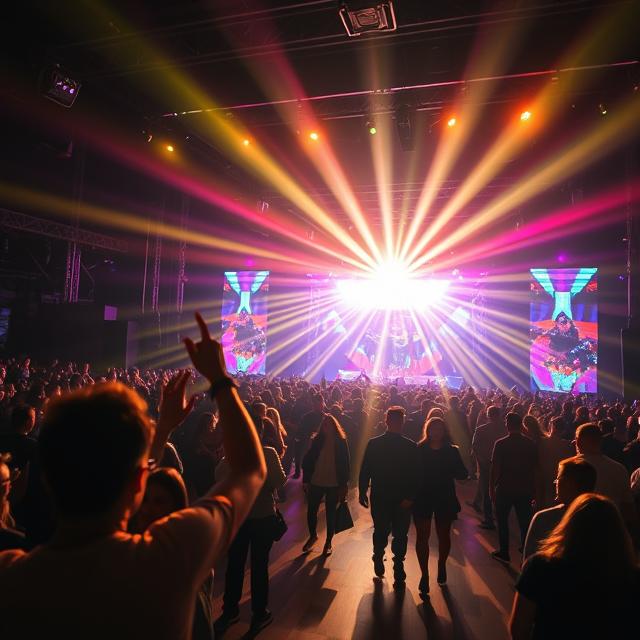
Using AI-Generated EDM in Your Projects
AI music technology for DJs and producers offers various applications:
Starting Points for Production
Use AI-generated tracks as starting points that you can expand upon:
- Extract MIDI from the generated tracks to modify progressions and patterns
- Replace AI-generated sounds with your preferred samples and synths
- Learn arrangement techniques by analyzing the AI’s structure
Rapid Prototyping
Test ideas quickly:
- Generate multiple variations of a track concept
- Experiment with different arrangement options
- Try unusual genre combinations to spark creativity
Background Music for Content
Create custom background music for:
- YouTube videos
- Streaming content
- Podcast intros/outros
- Social media posts
Practice Material
Use generated tracks for:
- DJ mix practice
- Remix creation
- Mixing and mastering practice
- Sound design analysis
EDM beat generation through AI provides valuable resources for all these applications.
Best AI Platforms for Electronic Dance Music
Several AI music platforms excel at electronic music AI generation:
For Beginners
- Suno.ai – Excellent for simple prompts with good genre recognition
- Soundraw – Offers genre presets and simple customization
- Beatoven.ai – Good for creating custom background tracks
- Boomy – Simple interface with EDM genre options
For Advanced Users
- AIVA – Offers detailed control over arrangement and instrumentation
- Soundful – Specialized in dance music with mixing options
- Amper Music – Professional-grade control over elements
- Melodrive – Adaptive music system with electronic genres
DAW Plugins
- LANDR’s Audio Plugin – AI-assisted production within your DAW
- Audiomodern Playbeat – AI rhythm generation
- Mixed In Key Captain Plugins – AI-assisted chord and melody creation
- Izotope’s Neutron – AI mixing tools for EDM
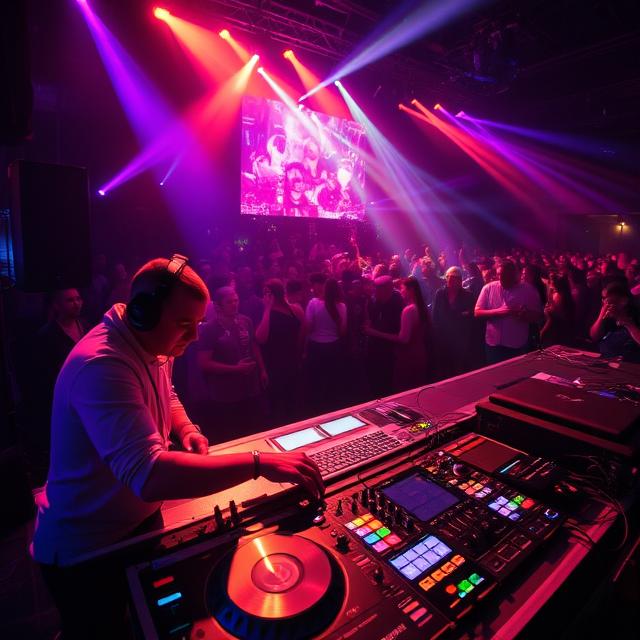
Future of AI in Electronic Dance Music
As artificial intelligence music creation evolves, we can expect:
More Genre-Specific Training
Future AI systems will have more nuanced understanding of micro-genres within electronic music, offering better results for niche styles like liquid drum and bass, deep tech, or future garage.
Better Sound Design Capabilities
AI will get better at creating the complex, evolving sound design that defines modern electronic music, particularly for bass design and textural elements.
Interactive Composition
We’ll see more interactive systems that allow real-time collaboration between human producers and AI, with the AI adapting to the producer’s additions and changes.
Integration with Traditional Workflows
Rather than standalone generation, AI will become more integrated with traditional DAW workflows, offering suggestions, variations, and enhancements to human-created content.
Personalized Models
Some platforms will allow training on your own production style, creating personalized AI assistants that understand your unique approach to electronic music.
Ethical Considerations in AI Dance Music
As you explore AI EDM production, consider these ethical points:
- Credit AI assistance in your production process when appropriate
- Use AI-generated content as inspiration rather than final product when possible
- Support human artists and the broader electronic music community
- Consider the intellectual property implications of training data
Conclusion
Getting good at writing AI music prompts for electronic dance music can make a huge difference in your tracks. When you tell the AI exactly what tempo, drum patterns, bass sounds, and synths you want, you’ll get music that really sounds like proper EDM.
The best approach combines specific technical details with clear structural guidance and emotional direction. As you practice, you’ll develop your own prompt strategies that consistently produce the EDM styles you’re looking for.
Whether you’re a DJ looking for new tracks, a producer wanting fresh ideas, or just someone who loves making electronic music, these EDM-specific prompting techniques will help you create better dance tracks without spending hours in complicated software.
Start with the prompt examples in this guide, then experiment with your own variations. The world of AI music prompts for EDM is constantly evolving, offering exciting new possibilities for electronic music creators at all skill levels.
For a deeper dive into various AI music prompts, visit our main AI Music Prompts category.
Sources:
https://www.topmediai.com/ai-music/good-song-styles-for-ai-edm/
https://www.vondy.com/electronic-dance-music-generator–LV6d2WjV
